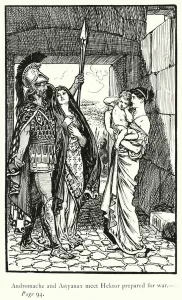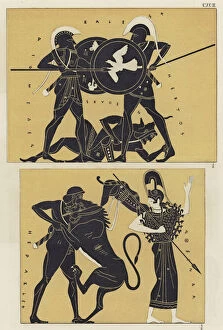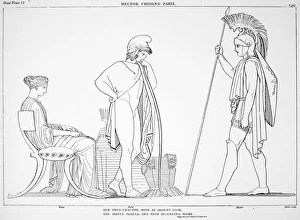Hektor Collection
"Hektor: The Heroic Warrior of Troy" In the epic tale of "The Iliad, " Hektor emerges as a symbol of courage, honor, and tragedy
All Professionally Made to Order for Quick Shipping
"Hektor: The Heroic Warrior of Troy" In the epic tale of "The Iliad, " Hektor emerges as a symbol of courage, honor, and tragedy. From his encounters with Andromache and Astyanax before heading to battle, to his final moments on the battlefield against Achilles, Hektor's story captivates our hearts. As we gaze upon the engraving depicting Andromache bidding farewell to her beloved husband prepared for war, we witness the strength that lies within their bond. Hektor dons his armor in a vibrant litho illustration, showcasing his readiness for the impending conflict. The funeral scene captures the somber aftermath of Hektor's demise. We mourn alongside Priam's family as they bid farewell to their fallen hero. Yet even in death, Hektor's legacy lives on through artistry and storytelling. Ajax's relentless attack on Hektor under Athena's guidance reveals both the ferocity of battle and Artemis rushing to aid him emphasizes divine intervention amidst mortal struggles. These scenes remind us that even heroes face overwhelming odds. Artists have also imagined different aspects beyond "The Iliad. " A conceptual representation envisions him as an asteroid named after this legendary figure – a testament to how deeply ingrained he is in human culture across time. Homer paints a vivid picture when he describes Paris wearing a peasant hat while being scolded by an armored Hektor ready for combat. This moment highlights not only familial tensions but also societal expectations placed upon warriors like him. Shakespeare immortalizes their tragic encounter in "Troilus and Cressida" where Achilles slays Hector during Act V. Wood engravings from 19th-century England bring this dramatic scene alive once more – reminding us that great stories transcend generations. Finally, Flaxman’s line engravings depict two crucial moments - Hector’s body being dragged behind Achilles' chariot and the funeral rites that honor his memory.











